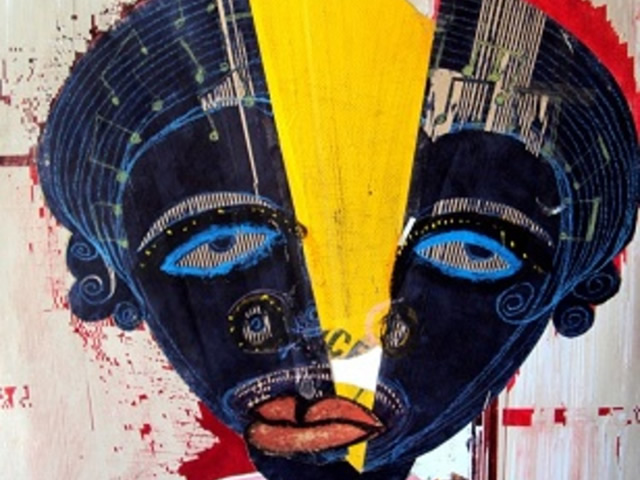Zim visual art continues to shine

Stephen Garan’anga Visual Arts
For time immemorial Zimbabwe’s contemporary visual art led lead by its unique art form of stone sculpture imposed itself heavily on some parts of the international art scene and deeply engraved its high position for many to follow. Naturally this legacy has been a thread of inspiration to generations of the country’s practitioners who have gone further diversifying their media and skill.
This too has seen some of the country’s established artists being invited to facilitate art workshops or adjudicate on premier art exhibitions in Africa and beyond.
Others have found it easy to participate in various international artists’ workshops, residencies and exhibitions cementing the country’s artistic reputation.
When we speak of Zimbabwean visual art being such a formidable force in African art, first we must have a crystal clear understanding of the countries of Africa and their native people.
The term African Art is often used to cover a large of ideas and value, but it produces an impression of unity that is false and unsupported by facts. The reality is much more complex and many-sided, and displays surprising differences in landscape, climatic conditions, race and cultures.
All these factors must be considered where they impinge on contemporary art. Africa and its artistic nature we must put focus on, is that of Africa South of Sahara and its native inhabitants.
The foreign and Arab elements of the north are here irrelevant as are the foreign and Asiatic elements of East and South Africa. They have no bearing on native African cultures.
Observations by various international and locally established artists who have been to various countries on the continent on their various artistic endeavours or invitations to carry out high level artistic duties have revealed the high competence of Zimbabwean art derived from high power of creativity and innovativeness.
Very often many continental visual artists give reference to Zimbabwe’s various art forms on various art talk platforms.
The most common references are our possession of three national galleries of contemporary art, where some
Zimbabwean art pieces are erected in the world, having a number of art books on the country’s contemporary visual art of which some countries
have in their art libraries and the presents of Zimbabwe’s art pieces on the continental market especially in South Africa.
These highly commendable observations on Zimbabwe’s visual were echoed by well-established and renowned artist and art educationist Chikonzero Chazunguza who is currently in the country and was recently the only international adjudicator invited to deliberate on the artworks for Namibia’s premier art show the ‘Bank Windhoek Triennial’.
He said our country’s art is a way up in terms of content, innovativeness and execution in comparison with many of our counterparts.
He also commented that the future of our various countries’ premier art exhibitions on the continent including Zimbabwe require the totality of the judges to be of an independent body, where the directors of the host institution and the curators are actually in a distance from the process and outcome.
More senior/mature artists should be invited to exhibit as this will bring in more daring work that is not restricted by the ethos of competition, also, one or two of them could also part in the judging process.
It would be advisable for the adjudicators not to bring forward their knowledge of any of the artists contesting in the show, in ways that may influence other judges. The work of the artists is supposed to speak out for itself.
He further commented that for us in Africa our art cannot merely be for art’s sake, understanding the subluminal issues informed by our multi-cultural, multi-ethnic, multi-racial, recent histories.
Our constant engagement with western hegemony in art and theoretical attributes to aesthetics may reduce art in Africa to be just narrative; speaking merely of township or village life, yet understanding our ethno, spiritual, political and urban visual culture will enable our art to go beyond where we are right now.
These critical facts have to be seriously considered by both practitioners and stakeholders if the encoding of our current way of life is to impact positively on the future generations.
Truly of late the issue of content on many of the produced artworks has been worrisome.
It has become vague to establish whether artists especially the young and upcoming whose works are often seen in various spaces are deliberately producing ordinary work that can meet up with the locally depressed market or it is the severity of the economic pressures that oblige them to use alternative ways therefore hinder their ability to make their ideas come through.
It will be very difficult to sustain our current position of being a yardstick on the African art scene considering artistic developments in other countries that are not in a lengthy financially crippling position as us.








Comments